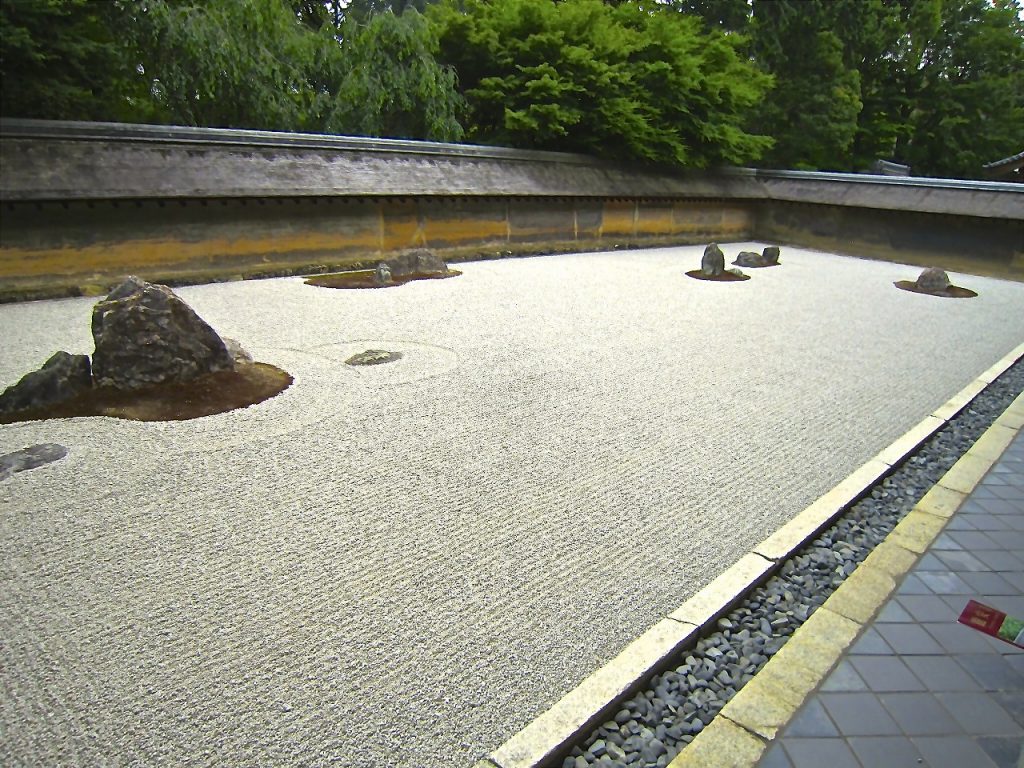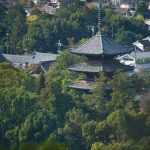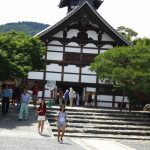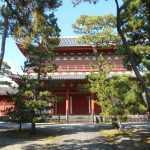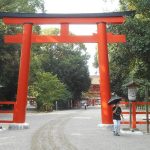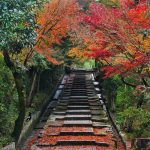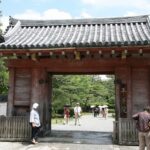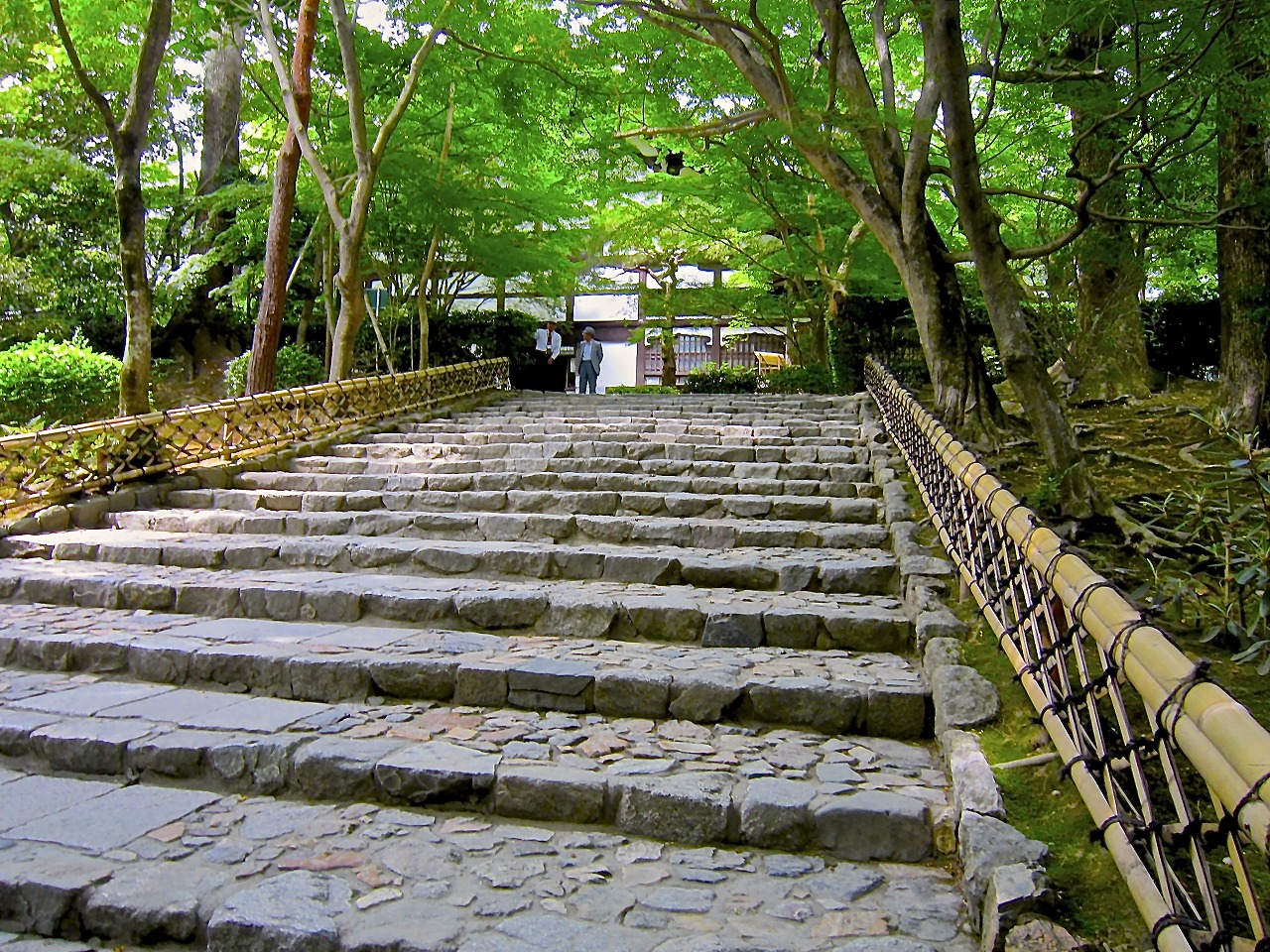
ページの目次
Ryouan-ji Temple(龍安寺)
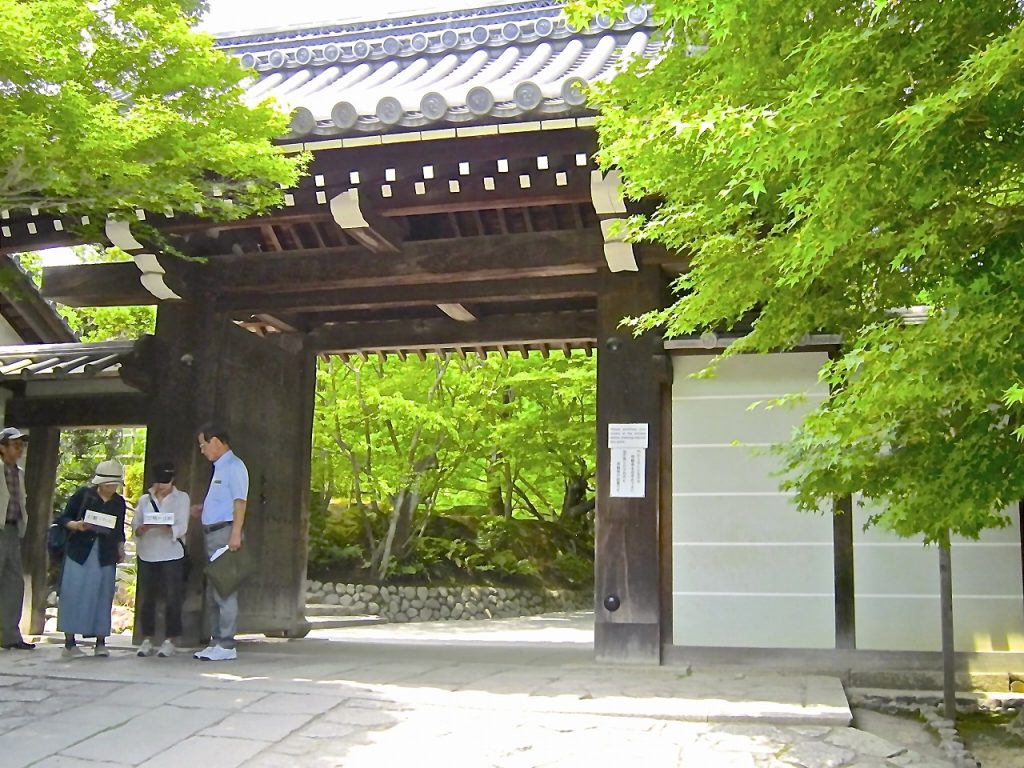
1. Location-Access
It is located at the foot of Mt. Kinugasa near the Golden Pavilion in Kitayama Mountain Area.
Nearest station is Ryoan-ji station in Keifuku Line and ten minute walking.
(北山エリアで金閣寺の近くの衣笠山の麓に位置している。
最寄の駅は京福電鉄「竜安寺」で駅から10分程歩いた所である。)
2. Who was built this temple?
1) In 1450, this temple was built by a priest of Myoshin-ji Temple in the villa of Katsumoto Hosokawa and was named “Ryouan-ji Temple”. This temple belongs to the Myoshin-ji Temple Group of Rinzao Sect Buddism.
(1450年、この寺は細川勝元の別荘に妙心寺の僧により建てられ、竜安寺と
名付けられた。この寺は禅宗臨済宗・妙心寺派に属している。)
2) In 1488, the Hojou (abbot’s quarters) was restored, and then many oher building were damaged by fire during ie Ounin-no-ran(wars, 1467-77). All these building were damaged by HOSOKAWZA Masamoto.
(1488年方丈が復興されて諸堂が整備された。すべてのこれらの建物は応仁の乱(1466-77)
の火事により焼失した。これらは、細川政元により再興された。)
3) However, all these buildings were destroyed by fire. The present serves as the main hall in 1606, and relocated to the sight of the Ryouan-ji.
(その後、焼失し、竜安寺の方丈(本堂)である現在の方丈は、1607年西源院方丈を移設したものである。)
4) The temple garden,which lie on the south side of Hojou, is thought to date from the 15-th century. It is popularly called the Seki-tei(rock and gravel garden) and the selling point of Ryouan-ji. The rock garden was later completed by Soami, a painter and gardener in 16th century and ecame popular since then.
(方丈の南側にあるこの庭は、15世紀中頃のものと考えられている。一般に石庭と呼ばれ竜安寺の見どころである。石庭は絵師、庭師の相阿弥により、完成され人気が出た。)
3. What is this temple famous for ?
1) Seki-tei 石庭
The Seki-tei is comprised of 15 rocks in fire groupongs which are arranged on a bed of gravel. It is well-known throughtout the world as the typical example of the Kare-sansui(dry landscape) rock garden. In the garden we can see nature compressed and giving abstract expression wihthin limited space.
(白砂敷の中に5群15個の石組が配置されている。自然を狭い空間に圧縮し、抽象化して表現する枯山水庭園の極限的な姿であり世界的に有名である。)
2) Garden 庭園
The garden is called “ Tisekaiya-teien”. There is a big pond in the center of garden, and walk around the surrounding garden>
(この庭園は池泉回遊庭園と呼ばれている。
鏡容地を中心とした庭園の中を周囲を歩くことを前提にした庭である。)
3)Was made a World Heritage Site in 1994.
Was made a World Heritage Site in 1994.
(1994年に世界遺産に登録された。)
4. What is highlight ?
1) There are actually 5 big rocks,10 smaller stones and white sand in this garden.This garden is famous fo “Karesansui” without water.
(5個の大きな石と10個の石及び白い砂が配置されていて、水を使用しない“枯山水”で有名である。)
2) The samon is marked by priest once a week so as to express water.
(水を表現するために、砂紋は僧より週1回描かれる。)
3) The white sand is spread out and raked just like a wave of sea in a geometrical design.
(幾何学的なデザインで、白い砂が広がって海の波のように庭を掃いている。)
4) It is up to each visitors to find out for himself or herself what this unique garden has a special meaning.
(この特徴のある庭が意味するものは、各々の観光客次第であろう。)
5) The longer we look at this garden, the more various imagination may come our mind.
(この庭を長く見ていればいるほど、様々な思いが脳裏に浮かんでくる。)
6) After observing or meditating enough this unique and rectangular garden(30m@10m), we all go around the temple building to see the Buddhism alter rooms and back yard.
(この独自で四角い庭を十分に観察や瞑想した後、来客者が部屋や裏庭を改造したものを見学して、寺の建物の周辺を理解してください。)
7) After all, it is quite free to appreciate this garden in a concept of Zen Buddhism or in your own imagination.
(結局、禅宗の悟り又は、あなたの思いでこの庭を理解して下さい。)
8) 15 rocks and stones have the individual interpretation.
Why don’t you sit down here and contemplate what the artist was trying to communicate?
(15個の石は、個々に解釈があるだろう。ここに座ってみて、悟った人が何かを 話しかけようとしているのでは?)
